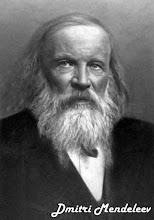
Radiation-free nuclear fusion could be possible in the future claim a team of international scientists. This could lead to development of clean and sustainable electricity production.
Despite the myriad of solutions to the energy crisis being developed, nuclear fusion remains the ultimate goal as it has the potential to provide vast quantities of sustainable and clean electricity. But nuclear energy currently comes with a serious environmental and health hazard side effect - radiation. For fusion to gain widespread acceptance, it must be able to produce radiation-free energy but the key to this has so far remained elusive, explains Heinrich Hora at the University of New South Wales in Sydney, Australia.
Conventionally, the fusion process occurs with deuterium and tritium as fuel. The fuel is spherically compressed - meaning compression occurs from all directions - with laser irradiation to 1000 times its solid state density. This ignites the fuel, producing helium atoms, energy and neutrons which cause radiation. Fusion is also possible with hydrogen and boron-11, and this could produce cleaner energy as it does not release neutrons, explains Hora. But this fuel requires much greater amounts of energy to initiate and so has remained unpopular.
Now, a team led by Hora has carried out computational studies to demonstrate that new laser technology capable of producing short but high energy pulses could be used to ignite hydrogen/boron-11 fuel using side-on ignition. The high energy laser pulses can be used to create a plasma block that generates a high density ion beam, which ignites the fuel without it needing to be compressed, explains Hora. Without compression, much lower energy demands than previously thought are needed. 'It was a surprise when we used hydrogen-boron instead of deuterium-tritium. It was not 100 000 times more difficult, it was only ten times,' says Hora.
'This has the potential to be the best route to fusion energy,' says Steve Haan, an expert in nuclear fusion at Lawrence Livermore National Laboratory in California. However, he also points out that it is still only potential at this point, 'there's a fair amount of work to do before this technology is at hand.'
Hora agrees that much more work is needed to fully understand this radical new approach. Its achievement will depend on continued advances in laser optics, target physics and power conversion technology, he concludes.

0 komentar:
Posting Komentar